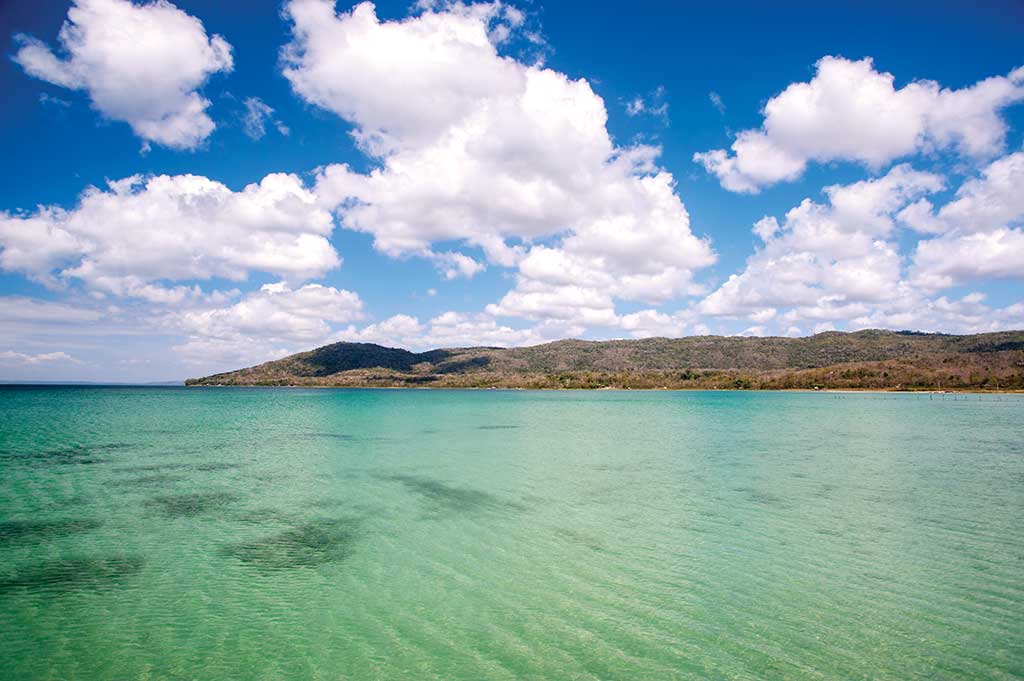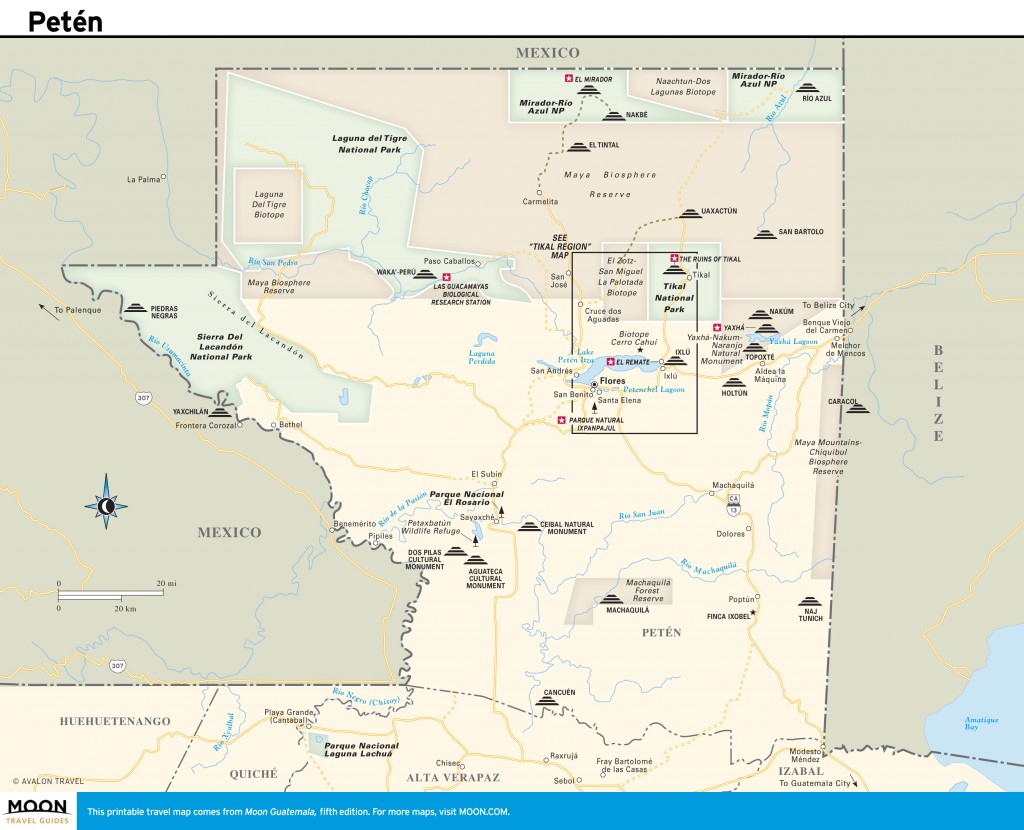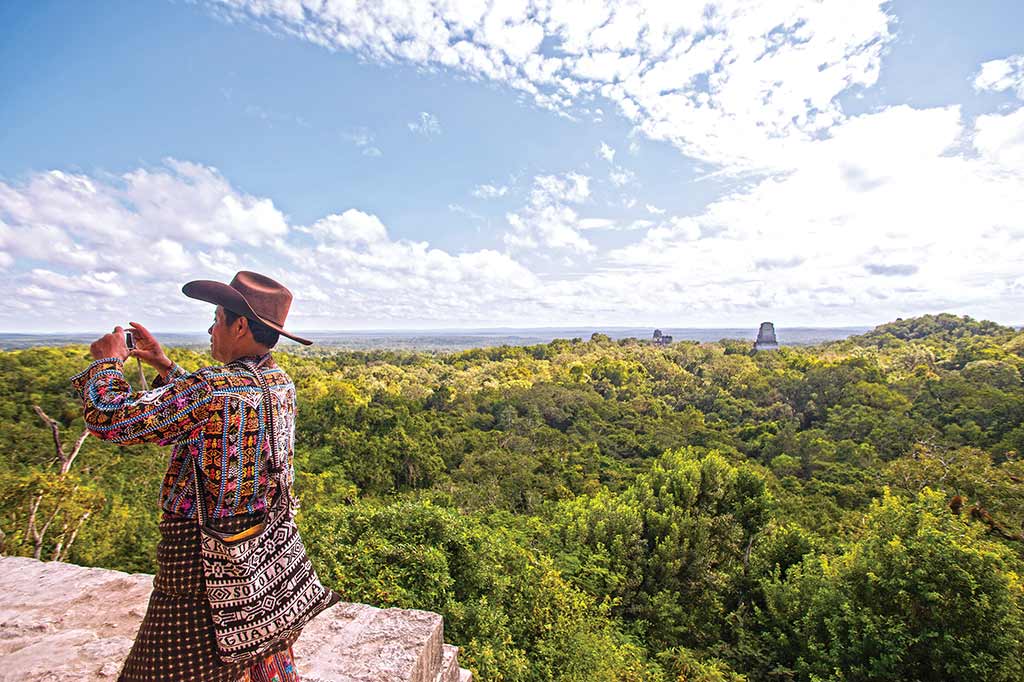Guatemala’s northernmost department conjures images of a remote wilderness, dense forests, and lost Mayan cities.

Lake Petén Itzá. Photo © Al Argueta.
Today, that image is only partly true, as much of the Ohio-sized Petén has been cleared by settlers for subsistence agriculture and cattle ranching. In an attempt to save the remaining forest and the still unexcavated Mayan ruins they harbor, roughly a third of Petén has been protected since 1990 in the form of several national parks collectively known as the Maya Biosphere Reserve. It is one of the largest remaining continuous tracts of tropical forest in Central America. Recreational opportunities inside and outside the reserve are boundless and the region is slowly becoming a magnet for adventure and ecotourism, thanks in large part to the filming of Survivor Guatemala here in 2005.
Petén is without a doubt the cradle of Mayan civilization, as it lays claim to some of the oldest known Mayan sites.Among the attractions are the enigmatic Mayan ruins of Tikal, one of the largest cities ever populated by the Mayans and certainly a must-see for any visitor to the area. Not only are the restored ruins impressive, to say the least, but the abundant wildlife found in the lush rainforests protected within the adjacent national park makes this a prime spot for birders and wildlife enthusiasts. Along the paved road to Tikal, you’ll pass the spectacular Lake Petén Itzá, one of Guatemala’s largest, surrounded by jungles and characterized by its luminescent turquoise-blue waters. The village of El Remate has sprung up along the highway and is quickly becoming a destination unto itself with a number of very comfortable accommodations and plenty of activities for the outdoor enthusiast. Many travelers now spend an extra day here after exploring the ruins.Southeast of Tikal, the remote ruins of Yaxhá, overlooking the site’s namesake lagoon, remain a remote jungle outpost despite their prime-time TV fame, and you can still have the place all to yourself on a typical afternoon. But that probably won’t last too much longer.
Petén is without a doubt the cradle of Mayan civilization, as it lays claim to some of the oldest known Mayan sites along with the earliest evidence of the writing and royal dynastic rule characterizing the civilization that flourished here. At the remote site of El Mirador, on the northern fringes of Petén near the Mexican border, you can gaze in awe at the massive temple pyramids of El Tigre and La Danta, which were erected centuries earlier than most other well-known Mayan sites but nonetheless show much the same level of sophistication. All of these sites are harbored within the Maya Biosphere Reserve and its seemingly interminable expanses of mostly undisturbed tropical forests. Hikers will appreciate the numerous opportunities for trekking to remote Mayan ruins along jungle paths, creating the potential for adventures not unlike those of the early explorers.

Travel map of Petén
Petén is one of Guatemala’s most fascinating regions, particularly for lovers of archaeology and outdoor activities. The parks encompassing the Maya Biosphere Reserve could keep you busy for weeks, in addition to the requisite visit to Tikal National Park. Some people make day trips to Tikal, coming across the border from Belize or flying in from Guatemala City. This will certainly serve only to whet your appetite for more Petén explorations. Visitors on one of these short stints should at least consider spending the night at Tikal or nearby Lake Petén Itzá. Another increasingly popular destination is the archaeological site of Yaxhá, site of Survivor Guatemala. There is a comfortable jungle lodge right on the shores of Yaxhá Lagoon where you can spend the night, a good idea if you want to take in all that this site has to offer, given its remote location.

Atop Tikal’s Temple IV. Photo © Al Argueta.
El Mirador, deep in the jungle near the Mexican border, involves an arduous journey of two days from the nearest village but is well worth it for the opportunity to visit one of the largest and earliest Mayan cities in existence. The tallest, and some of the largest, manufactured pre-Columbian structures can also be found here in the form of the massive La Danta and El Tigre pyramids, with bases the size of three football fields. A typical round-trip itinerary to El Mirador takes 5-7 days, depending on how long you want to stay at the ruins and if you want to stop at other nearby sites on the way back.
The most natural starting point and hub for any in-depth Petén explorations is the island city of Flores, with its pretty pastel-colored houses and quiet streets; it’s unlike any other town in Guatemala. Its sister city of Santa Elena, on the mainland shores of Lake Petén Itzá, is an equally logical choice for a base, though it’s not nearly as attractive. Many conservation organizations and adventure travel outfitters are based in Flores/Santa Elena. Air and ground service connects Flores/Santa Elena to most of Petén, other parts of Guatemala, and Belize.
Excerpted from the Fifth Edition of Moon Guatemala.